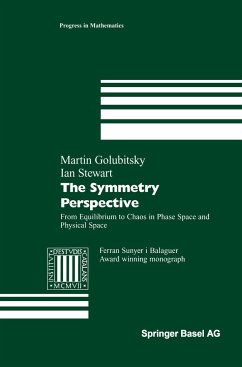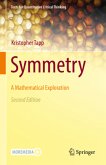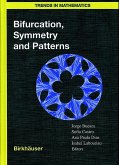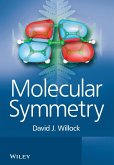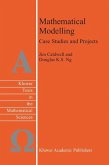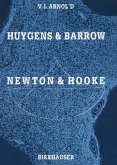Pattern formation in physical systems is one of the major research frontiers of mathematics. A central theme of this book is that many instances of pattern formation can be understood within a single framework: symmetry.
The book applies symmetry methods to increasingly complex kinds of dynamic behavior: equilibria, period-doubling, time-periodic states, homoclinic and heteroclinic orbits, and chaos. Examples are drawn from both ODEs and PDEs. In each case the type of dynamical behavior being studied is motivated through applications, drawn from a wide variety of scientific disciplines ranging from theoretical physics to evolutionary biology. An extensive bibliography is provided.
Hinweis: Dieser Artikel kann nur an eine deutsche Lieferadresse ausgeliefert werden.
The book applies symmetry methods to increasingly complex kinds of dynamic behavior: equilibria, period-doubling, time-periodic states, homoclinic and heteroclinic orbits, and chaos. Examples are drawn from both ODEs and PDEs. In each case the type of dynamical behavior being studied is motivated through applications, drawn from a wide variety of scientific disciplines ranging from theoretical physics to evolutionary biology. An extensive bibliography is provided.
Hinweis: Dieser Artikel kann nur an eine deutsche Lieferadresse ausgeliefert werden.
From the reviews:
"This book was awarded the Ferran Sunyier i Balaguer Prize for 2001, and I am sure that it will be a very useful resource not only for researchers in this area but also for those who want to obtain the benefits of using this approach in applications." --Bulletin of the American Mathematical Society (Review of hardcover edition)
[The] rich collection of examples makes the book ... extremely useful for motivation and for spreading the ideas to a large Community. This [review] is far from complete and cannot reflect the authors' unique way of presenting examples, asking questions, giving answers or forming an intuition."(MATHEMATICAL REVIEWS)
"This book was awarded the Ferran Sunyier i Balaguer Prize for 2001, and I am sure that it will be a very useful resource not only for researchers in this area but also for those who want to obtain the benefits of using this approach in applications." --Bulletin of the American Mathematical Society (Review of hardcover edition)
[The] rich collection of examples makes the book ... extremely useful for motivation and for spreading the ideas to a large Community. This [review] is far from complete and cannot reflect the authors' unique way of presenting examples, asking questions, giving answers or forming an intuition."(MATHEMATICAL REVIEWS)

